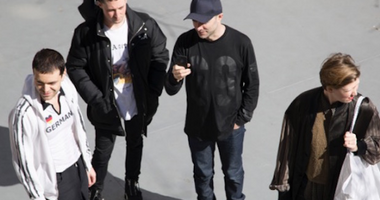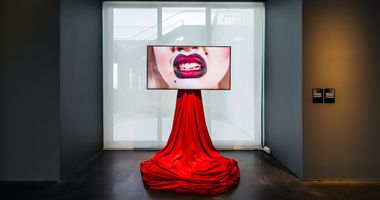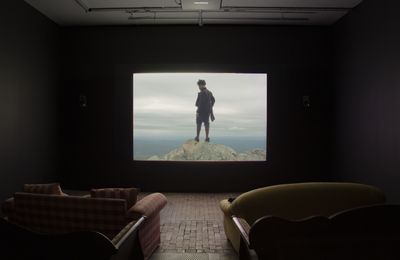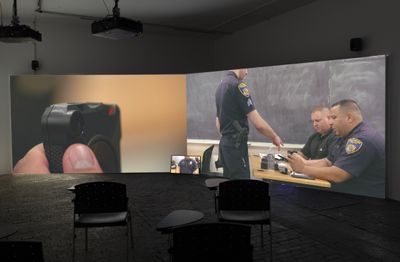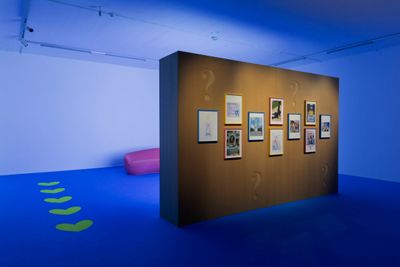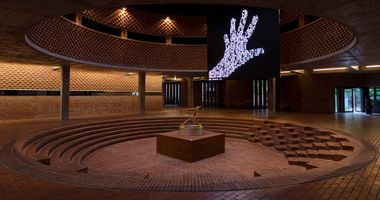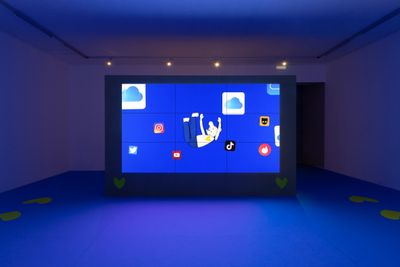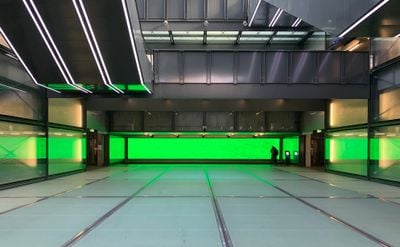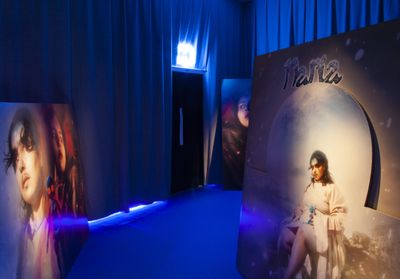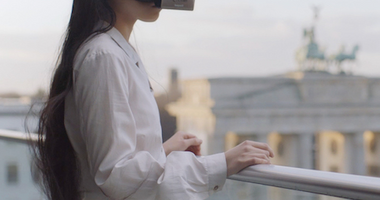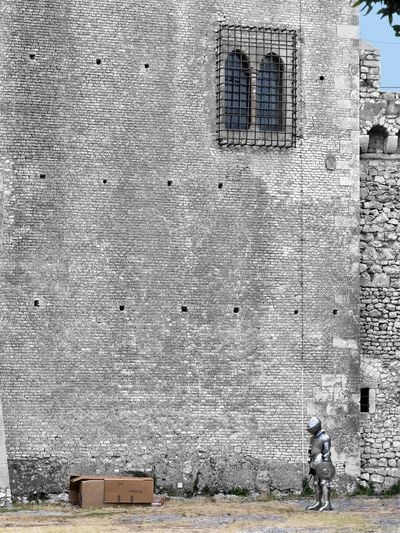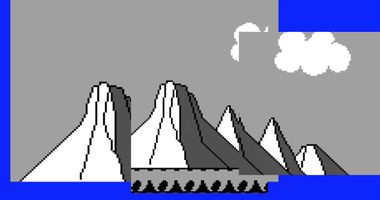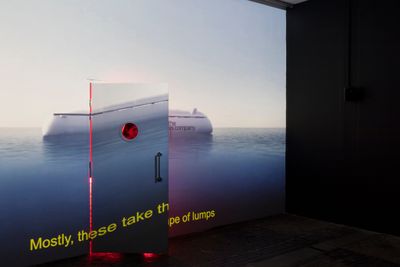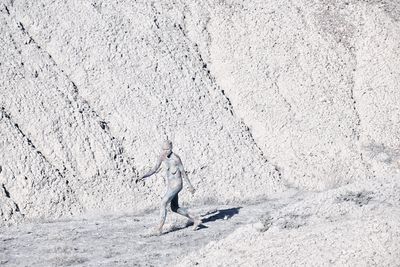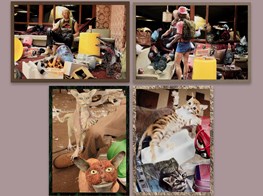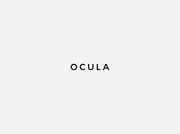DIS after Post-Internet: The Biennale of the Moving Image

DIS, Everything But The World (2021). 4k video, colour, sound, 37min 50. Exhibition view: Bienniale de L'Image en Mouvement 2021, Centre d'Art Contemporain Genève (12 November 2021–30 January 2022). Courtesy the artist and the Centre d'Art Contemporain Genève for BIM'21. Photo: Cynthia Mai Ammann.
Arriving a year late due to pandemic-related delays, the 10th Biennale of Moving Image opened in November with 17 new works and commissions, most of them housed in the multi-storey Centre d'Art Contemporain Genève (12 November 2021–30 January 2022).
Co-curated by New York-based collective DIS—composed of Lauren Boyle, Solomon Chase, Marco Roso, and David Toro—and the Centre's director, Andrea Bellini, the exhibition is, according to its curatorial statement, 'conceived as a radical "pilot season"—a collective effort to interrupt regular programming and find an exit from our human-centered, capitalist death drive.'
Titled A Goodbye Letter, A Love Call, a Wake-Up Song, the exhibition's films, videos, and installations are envisioned as pilot episodes, both as chapters to new story lines or as new thematic interest by invited artists and collectives as well as new programmes for DIS's own online platform and other outlets showcasing online series and content.
The multi-authored film Circle Time (2021) documents a collaboration between DIS, TELFAR, Babak Radboy, Terance Nance, and Ryan Trecartin as they programme an IRL children's school.
Originally inaugurated in 2018, the school became essential in providing education for children in the collective's immediate community amid Covid-19 school closures. Edited dynamically by DIS friend and collaborator Ryan Trecartin, recorded segments feature speakers like Zakiyyah Iman Jackson, a feminist scholar of English, and Black American scholars Lewis Gordon and Fred Moten.
In the most touching segment, author and Black trans activist Ceyenne Doroshow discusses the complex nature of gender and sexuality, talking to children about growing up differently and taking care of yourself and others. The children break their concentrated silence once in a while to interrupt the speaker with insightful comments and questions.
The main function of the work is to show that the process of raising consciousness around cultural and political issues—something that popular culture classifies as being 'woke'—ought not wait for university.
Much like the many voices brought together in Circle Time, each one edited into a compilation of many, film works throughout the Biennale fit neatly into the Centre's building and layout, creating the sense of visiting multiple worlds encompassed into one.
Nowhere is this seamless transition felt more clearly than when entering the crisp sonic environment of Simon Fujiwara's Who is Who? (2020) after seeing the three-channel video installation of Theo Anthony's film Neutral Witness (2020), which documents requisite body camera training for Baltimore Police.
While Anthony's work confronts the use and misuse of image technologies in law enforcement, tackling a broad and systemic problem that connects with issues of racism, Fujiwara calls viewers back into their inner consciousness to think about how we become an identifiable social entity.
Strung together like a series of animated gifs, memes, and digital cutouts, a cute androgynous bear on a search for identity interacts with the social and technological façades of the 'Whoniverse', the subject's own bubble presented to them as the world.
Connecting inner and outer worlds is Riccardo Benassi's Daily Dense Dance Desiderio (DDDD) (2021), a single channel three-minute video played on a loop on a large screen installed beyond the Centre at the station of Léman Express train line, where it will operate for an entire year.
Shot at a nightclub, images seamlessly move from a typical dancefloor scene to frames of blinding green light, with an atmospheric ambient soundtrack produced by the artist that promises a tech house crescendo it cannot deliver.
Benassi chooses the setting of a dancing crowd at a nightclub saturated with a beaming light to probe the convergence of the real and the abstract. The precise hue of green in the video is borrowed by the artist from the station's architecture, including the light emanating inside the escalators.
...the 2021 Biennale of Moving Image is a testimony to both the relevance of time-based media for our time and DIS's running interest to index and showcase the medium's purpose within contemporary art.
It has always been difficult to curate film, video, and new media art exclusively, because works are often long and tiresome and hardly watched in their entirety. Covid-related screen fatigue might have also contributed to an aversion to screens and projections.
Surprisingly, most of the works selected for this exhibition, regardless of their length and style, are engaging, entertaining, and watchable in their entirety.
This success might be due to the fact that some if not most artists invited do not solely operate within the art world. Many also work in fields that rely on the political economy of the moving image, learning how to keep their audiences engaged without compromising their intended effects.
One example is TELFARTV, a small video archive of designer Telfar Clemens' recent projects blending his fashion practice with live television production, created in collaboration with the Ummah Chroma Collective (Community of Colour), an interdisciplinary outfit whose practice focuses on the question of Black cinema and how to make room for alternative histories and non-discriminatory worlds.
Installed beautifully in a black room, multiple flat screens mounted on poles and tripods show video clips of Clemens' team at work in the studio as the artist, fresh from designing the uniforms for Liberian athletes at the Olympic Games, documents his ambitious plan to set up a 24-hour television channel in addition to running his fashion studio.
Formally, the installation ends up functioning as a spatial tautology that places viewers in the middle of the very thing—a television station—whose development they have been invited to view. A logic that informs the curation of the exhibition.
I have been paying attention to the work of DIS since their debut as the curators of the 9th Berlin Biennale (4 June–18 September 2016) and creators of the online video-based platform DIS.ART.
In Geneva, it was pleasantly reassuring to see the collective continuing to expand on their trajectories and interests, ignoring the schizophrenic and promiscuous strategies in contemporary art today, which push curators from one area of research to another as they chase the ever-changing tastes of institutions and funding bodies.
Until now, DIS has been characterised in the art world as being more interested in the superficial qualities of technology, image, and fashion, as if they were not interested in social and political concerns in the digital age. But A Goodbye Letter, A Love Call, a Wake-Up Song situates the collective's fascinations within a commitment to probing the theoretical, social, and political consequences of the technological present.
It might have been convenient to call this trend 'post-internet' a few years back. But the term has become increasingly insufficient in explaining art's indexing of new technological transformations as they begin to display their true political colours via misinformation, irreconcilable sectarian divisions, and the replacement of reality with subjective perceptions and affects.
This is why the 2021 Biennale of Moving Image is a testimony to both the relevance of time-based media for our time and DIS's running interest to index and showcase the medium's purpose within contemporary art.
The most ambitious work included in the Biennale, which also doubles as the central motif for its various lines of inquiry, is DIS's own Everything But The World (2021). Set in what appears to be Los Angeles, the docu-sci-fi imagines a reality in which present-day civilisation has become extinct.
In one scene, people of different ages guided around a castle by a female tour guide, who highlights the misunderstandings, self-interests, and mistakes that contributed to humanity's demise.
The film is projected onto a large and asymmetrical screen situated in a large room walled on one side with glass windows covered with translucent orange film, its staging seemingly reflective of the conditions that may have brought the society in the narrative to its end.
Take the museum's freezing floor, which is coated with electrical blankets so that viewers can sit on a warm surface as a series of ceiling fans simultaneously cools the room down. As if to demonstrate the world can't decide whether the earth is getting warmer or colder. —[O]

